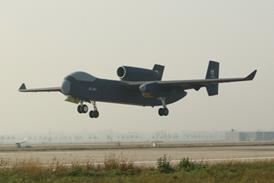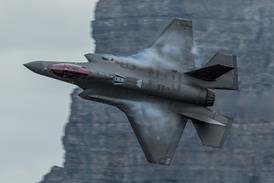Lufthansa Technik (LHT) is developing a mobile, automated repair system for primary composite airframe structures that could be ready within five years.
While repair processes exist for secondary composite structures such as fairings and engine cowlings - where damaged carbon fibres are removed and replaced with new material - this has not yet been approved for primary structures.
Damage to these areas is fixed through doubler repairs, with composite or titanium patches, said Franz-Josef Kirschfink, director of technology projects at the German maintenance provider. In both cases, additional material is applied to reinforce the main structure, leading to higher weight and increased operational costs.
The existing material replacement repairs for secondary structures are mainly manual processes, where a technician typically cuts away damaged material layers in a stepped manner and substitutes them with a bespoke, repair patch.
However, the labour-intensive work bears certain risks, particularly during the grinding, when technicians may inadvertently damage intact material. Surface contamination before the gluing process can also compromise the part's final strength.
While this may be acceptable for non-critical components, this is not the case for primary airframe structures.
The key is to automate the repair process to achieve replicable, reliable results. This includes the initial damage detection, removal of the destroyed section, surface contamination measurement as well as final production and implementation of the replacement material.
LHT is developing a robotic system with a military airframe manufacturer and has made considerable progress, according to Kirschfink. An initial version, which can be employed at a maintenance base, will be ready in about two years, he said.
The overall aim is, however, to produce a system that can be employed as a mobile unit on airport ramps, where most structural damage happens, for example through ground services vehicles.
This could be feasible in five years, said Kirschfink.
One of the challenges is to develop the required non-destructive testing (NDT) system. Manufacturers have employed equipment to monitor the quality of composite components during production. However, as yet there is no NDT technology for large-scale airframe structures that can give the maintenance engineer on the ramp reliable information to decide whether an aircraft needs to be immediately repaired, said Kirschfink.
The development is one of a number of German government-funded technology research projects at LHT.
While carbon fibre-reinforced plastic has been used for secondary and primary airframe structures for decades, "composites are, in our view, still a wide open field", said Kirschfink. "There is still a lot to do."
Source: Flight International























